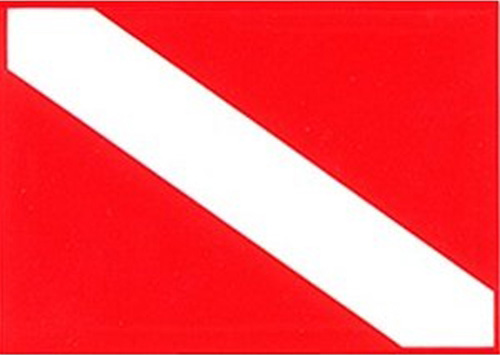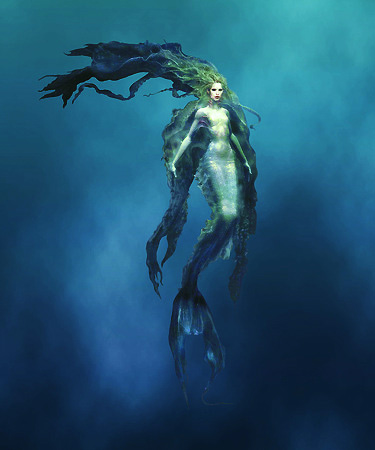


| |
| Home |
| Recreational Diving |
| Technical Diving |
| Aqua Dive Academy |
| Coron Philippines |
| About Us |
| Price List |
| Contact | Dive Centre Hours Daily 08:00- 12:00 14:00-19:00 |
| Located at ASIA GRAND VIEW HOTEL, Governor’s Avenue, Jolo, Brgy. 5, Coron, Palawan, Philippines |
Updated 01 Jan 2017 |
| EQUIPMENT SELECTION
"So, the truth is out. There are a handful of super regulators on the market, a slew more of very good regulators, a bunch that are probably alright for most vacation divers, and a handful that, well, a serious diver wouldn't be caught dead with. Or would he?
For cold-water divers, those who brave the Great lakes, Long Island Sound, or do any diving where the surface temperature is less than 37"F, there are really four fine regulators to choose from.
At least that's our interpretation of the Navy tests. You see, a superb regulator is so vital to the safety of a diver, that to dive with anything but the best - or one of the best - is a risk we prefer to avoid. But, just what is the best? And why should a sport diver, who doesn't push himself like a Navy diver, need the best?
The answer is not complicated. A sport diver, in our book, should be prepared for any contingency that may occur. Only the best regulators permit that. The extra hundred or two hundred dollars they might cost is cheap insurance.
To understand the difference between a top-of-the-line regulator and the rest, simply realize the three external major variables that affect how - or whether - a regulator will deliver air.
1. The deeper one goes, the more difficult it is for a regulator to deliver air and the more resistance is offered to exhaled air. Every regulator has an ultimate depth limitation.
2. The lower the air pressure in the tank, the more difficult it is for a regulator to deliver air. Some regulators can pull air from a nearly empty tank, while others will deliver no air at the same psi.
3. The harder a diver works - that is, the more rapid and deep the diver has to breath - the more difficult it is for the regulator to deliver air and the more resistance is offered to exhaled air.
In evaluating a regulator, forget all the advertiser's hooey about pistons and balance and servo-assistance and biradial diaphragms. Independently of the conditions under which the regulator will deliver air, the technical specs mean little to the sport diver.
The truth is in the test performance.
Surely the regulator manufacturers know just how well their products work. It's just that they have chosen to provide magnificent technical descriptions as substitutes for facts about performance.
The latest ad for the Mares MR 12-III says its 'balanced diaphragm design provides consistent intermediate pressure for years of dependable performance' and it has 'an ingenious, second stage bypass tube that creates a swirling, low-pressure vortex. Allowing you to breath naturally and effortlessly. Even under the toughest diving conditions.'
Tabata doesn't even say that. 'The new Liberator TR-200 regulator comes in a variety of Tabata's famous hot colors. And it features a purge slide lock which relieves pressure on the demand valve during storage. Rated at 4000 psi, the TR-200 has a 360" swivel top plus two high-pressure and four low-pressure ports.'
That's the sort of information manufacturers provide to entice us to buy their regulators. We deserve more than that. Thanks to the Navy tests, we now have it.
But again, why does the typical sport diver need a top-of-the-line regulator. Won't just an ordinary one do?
Suppose you're diving in a tidal flow or a strong current. Or suppose you find yourself with less than 300 psi, strong current or not. If you're at 100 feet, or even 60 feet, several of the regulators the Navy tested do not deliver air with the ease their standards require. Under more severe circumstances, it could mean that you might not even be able to draw air.
As a sport diver you shouldn't get into these circumstances. Hopefully, you won't. But it's important to note that there are scores of sport diver deaths every year where the victim is found with some air left in his tank, but he has drowned. Often the regulator is out of his mouth, as if he couldn't get air. The deaths are chalked up to drowning or in some cases panic, but in many cases the reason for the death is that the diver couldn't get air. Because of some combination of his work or breathing, the depth at which he was diving, and the low air pressure in his tank, his regulator just couldn't deliver.
And if the regulator's failure to deliver air doesn't cause a fatality, it can lead to an embolism or the bends. Too many divers, when a regulator has failed to deliver, have panicked and hightailed it to the surface, only to injure themselves in the process. In many cases, by rising ten or fifteen or twenty feet, the lessened pressure permits the regulator once again to draw air from the tank. Had they tried to inhale once again, they would have found air - which is one reason why one should leave ones regulator in ones mouth on free ascent and breath in and out - not hum. [P.B. note PADI differs on this scenario.]
No one officially attributes these injuries or death to regulator failure, although the regulator, in many cases, did fail. When it's tested on the surface it works just fine. But odds are the diver was injured or died when his demand for air exceeded the ability of the regulator to deliver - when he exceeded the specifications of the regulator ... specifications, the manufacturers don't address in their advertisements or their literature.
So, in our mind we think the serious diver, and even the occasional diver, ought to have one of the top-of-the-line regulators. " |
Information Regarding the Akitsushima Some, like hobby historian Peter Heimstaedt, claim that the Akitsushima is 486ft long, some 200m, most insist that she is 150m long. This is plainly not correct, as the Japanese did not extent the hull by some 30% somewhere in the Pacific in the two years that she was afloat. Also anyone who has dove her can tell that she is not 150m long. So where did the 487ft come from?? Look at your keyboard! Just a typo by someone and every other one who "Quoted" this, just did not do their homework. |
Many clam that she only carried one plane a KI03. NOT TRUE. She was a service boat, a bit like the sevice trucks following the cars in the Paris-to-Dakar-Rally. Read the following: ”Coral Sea Air Counterattacks, 7-8 August 1942 Admiral Ghormley well said that a basic problem of the operation would be to protect ships from land-based air attack during the landing and the unloading. True, General Kenney's Flying Fortresses and medium bombers did their best; 13 Flying Forts raided the Rabaul fields 7 August and destroyed a number of planes, but they were too few to prevent enemy counterattacks. So the main responsibility for protecting the amphibious force fell on the planes from Admiral Fletcher's carriers, and on the ships' antiaircraft guns. Rear Admiral Yamada, Commander 25th Air Flotilla, had some 48 long-range bombers ready on 7 August as well as 12 to I5 big flying boats based on tender Akitsushima in Simpson Harbor. A staging field for land-based planes was already in use at Buka Passage between Buka and Bougainville. It did not take Admiral Yamada long to react to the report of our landing at Tulagi. At 0900 August 7 his orders went forth to the 5th and 6th Air Attack Forces under his command, and at 1045 an Australian coastwatcher in Bougainville sighted many twin-engined bombers flying south-easterly, and passed the word to Admiral Turner at Guadalcanal. At 1315, the radar in Chicago picked up this flight 43 miles away; five minutes later, about 27 of them covered by fighter planes were seen coming in high over Savo Island. The attack was a high-level one that did no damage. At about 1500, two unheralded groups, of 16 dive-bombers, singled out the X-ray group off Guadalcanal and scored a hit on destroyer Mugford that killed 22 men but did slight damage. Both counterattacks would undoubted have been more effective but for the work of the combat air patrol furnished by carriers Enterprise and Saratoga, then operating with Wasp southwest of Guadalcanal. These were directed by the fighter-director team in Chicago. The first group of six Wildcats from Enterprise was given the reciprocal bearing of the approaching enemy, and so went wild. The second, third and fifth groups, each of eight Wildcats, claimed one or two kills; the fourth, of six Wildcats, tangled with a bomber-fighter formation and lost three planes with their pilots; two more made forced landings but the pilots were recovered. Saratoga planes, too, were in the combat air patrol; two groups of eight Wildcats each attacked an enemy formation over Savo Island, had no time to gain altitude, and together lost five of their number to "Zekes"; a third group of eight Saratoga F4Fs intercepted eleven Japanese dive-bombers, whose approach had not previously been detected, and claimed to have shot down all but one. Wasp had charge of combat air patrol over Admiral Noyes's carrier formation on the 7th, but six of her SBDs that were on a bombing mission against Tulagi contributed to the general melee. They were attacked by six "Zekes" and lost one of their number; the pilot was recovered. Considering that almost all the carrier-plane pilots were naval aviators of the latest crop, with a little leaven from the victors of Midway; that this was the first American amphibious operation to be covered by carrier-based air, and that the enemy was energetic and relentless, these American pilots did exceedingly well. They certainly saved the transports from damage, and paid for it by the loss of eleven F4Fs and one SBD. As usual, their claims of planes shot down were excessive, owing to duplication; but Admiral Yamada admitted the loss of 14 out of 43 bombers and two out of 18 "Zekes" in the two attacks. He was not at all pleased with the results of this attack, especially as his planes had been unable to find the carriers. When the enemy delivered a torpedo attack next day, the Task Force was better prepared to meet it. Admiral Turner, tipped off some 8o minutes in advance by the faithful coastwatcher on Bougainville, had both transport groups in cruising disposition, screened by cruisers and destroyers and maneuvering, at 13.5 knots by simultaneous turns, in which he had vigorously drilled the transports en route to Guadalcanal. A few minutes before noon August 8, a large formation of enemy planes was sighted swinging over the eastern cape of Florida Island. The majority of them were low-flying "Bettys" armed with the deadly Japanese airial torpedo. Three fighter planes from Enterprise, patrolling over Nggela Channel, took out four of them. One peeled off to strafe Beach "Red”, but the rest had to pass the gantlet of the screen's anti-aircraft fire and then that of the transports. They came in very low, some only 20 feet above the water; and those that got as far as the transports were so groggy with machine-gun hits as to remind one officer of heifers loose in city streets. Only nine out of 26 torpedo-bombers were seen to pass through the transport formation; the Japanese admitted that 17 were shot down. The only hit they obtained was on destroyer Jarvis. A few minutes later, a small formation of the "Bettys" came in. They too took a bad beating, but two of them when lethally hit tried suicide tactics, one with success. The Japanese pilot just managed to steer his burning plane into transport George F. Elliott, with deadly effects. If the air battle of the 7th was won by the carrier planes, this defeat of a major threat by the torpedo-bombers was largely due to the ships' anti-aircraft gunners and to excellent ship handling. Admiral Turner always turned his transports to parallel the line of the planes' approach; and, as torpedo-bombers have to come in on a wide angle in order to drive their "fish" to a target, this quick maneuver baffled them and gave the anti-aircraft gunners a chance. Ship losses might have been nil had damage control been up to par. What happened on board Elliott is not entirely clear; but it seems that a fair part of the crew abandoned her prematurely, the one destroyer which helped the fire fighting was insufficient, an attempt to smother the fire below by the time-honored method of closing all hatches proved unsuccessful, and by the time darkness set in the transport was a mass of flames. A destroyer sent to sink her fired four torpedoes at close range without effect and Elliott became a burning derelict which made a handy mark for the enemy that night. She was a total loss. Thus, during the first two days of Operation "Watchtower”, the enemy had managed to inflict a few losses without accomplishing anything more than a slight delay in the American timetable. Before midnight August 8 the beachhead, airfield and enemy encampment on Guadalcanal, and the three islands wanted on Tulagi-side, were secured; everything looked rosy. But the critical period in an amphibious operation, under World War II conditions, was not the actual landing; the crisis came when the enemy counterattacked in strength. That moment had now arrived. A few minutes after midnight, the Battle of Savo Island opened." |
Facts that you need to know about Cave and Cavern Diving Cave Diving kills Open Water Divers! Get training and become certified! Every year open water divers, macho divers, Instructors "PADI/ NAUI/ SSI/ BSAC...etc" you name the affiliation, end up dead in caves. Why? Because caves are fascinating, exiting, full of mystery and Taboo. You are told: "Don't go there" "Don't do that" "Look but don't touch". There are even big invitation signs posted outside the cave entrance (Sipadan - Indonesia) reading "Do Not Enter!" {Please Enter?}. The problem with these warnings is that they just evoke/ provoke you to have a quick look. You go in, just a little. Waow! This is breathtakingly beautiful. :) The siren is calling you to come closer, to go in deeper. Your adrenalin level is sky high, or should I say ocean deep. But you do not hear the siren in your brain go off, saying get the F**K out of here. You go in deeper, and then the Siren is taking your last beautiful breath away! :( How can this be avoided? With proper training, knowledge, equipment, certification and planning. Then cave diving gets interesting, fun, exiting ant not taboo. One of the proclaimed natural wonders of the world (by Jacques Cousteau) is the Turtle graveyard at the above mentioned Sipadan. It is supposed to be a sort of "Valhalla" for old and weary turtles, a last resting place for them before they go to Nirvana. B.S.!! Their skeletons end up in the cave, just like the divers! They die of suffocation, because they run out of air by getting disorientated and loosing their way. Read "They can not find their way out in time". Well in a sense it is the last resting place for these very weary turtles! |
Deep Down YOU want the Best, |
Money can buy for You and Your Loved Ones. |


